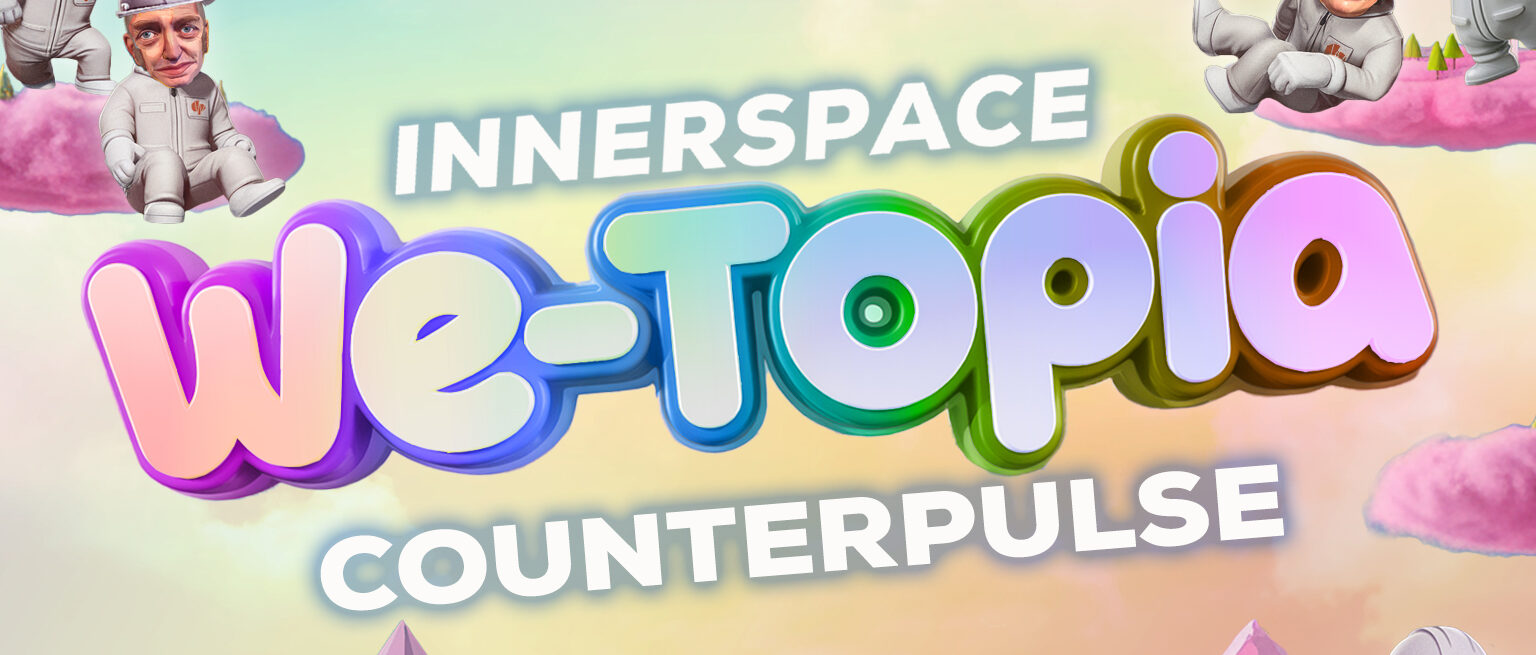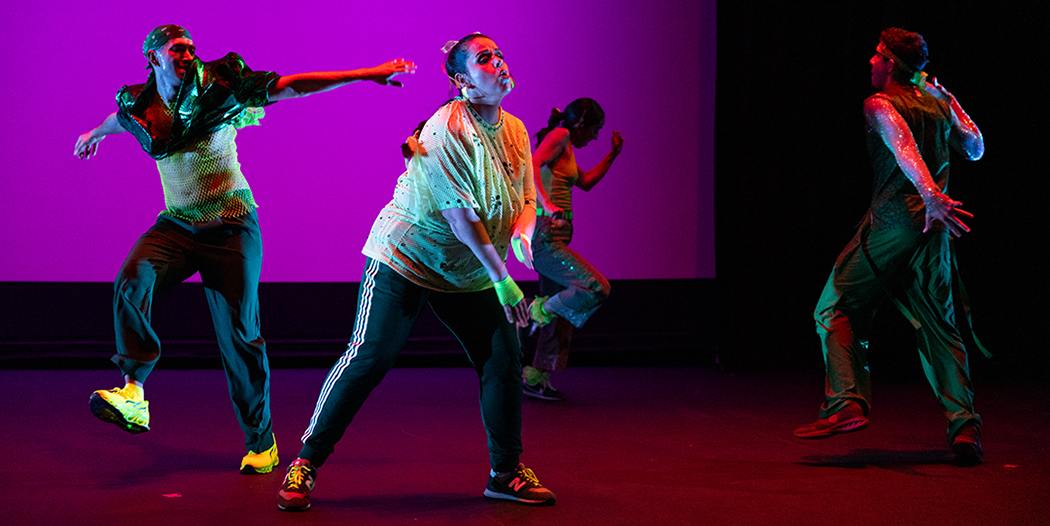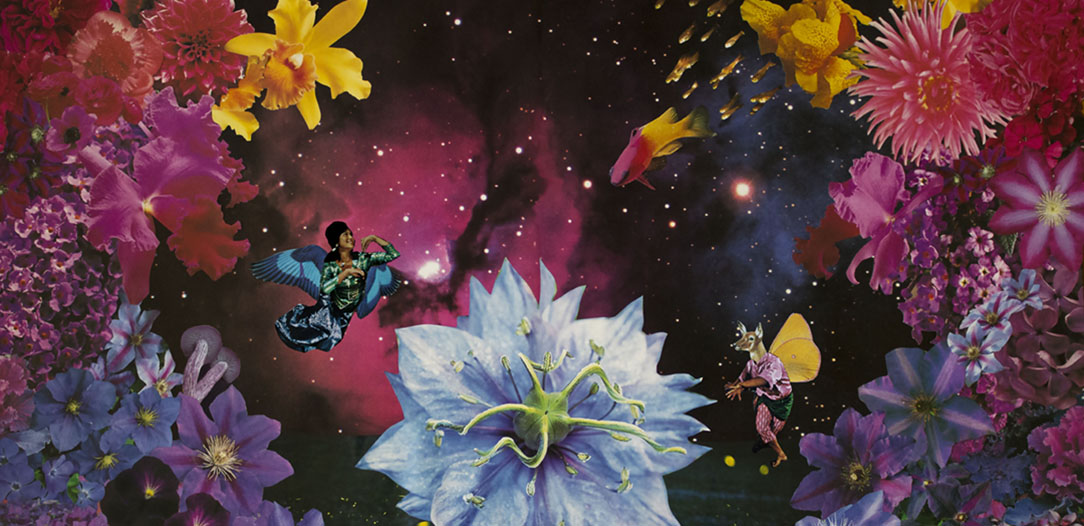Below is some of our writing about Snake Talk, which is in part inspired by Sianne Ngai’s book Our Aesthetic Categories. Specifically, we are investigating what she calls the “zany” aesthetic, allowing it to permeate the structure and physicality of our work.
Snake Talk is a third-wave feminist proposal nestled within an extreme and often uncomfortable aesthetic framework. We are tired of men making dances about feminism, and we are tired of making dances that attempt to transcend or obscure the troubling effect of neoliberalism and late capitalism on contemporary life. Snake Talk harnesses the somewhat terrifying aesthetic of the “zany” (as delineated by feminist cultural theorist Sianne Ngai) to confront, consume and transmute patriarchal and neoliberalist frameworks. In Snake Talk, three women use their own bodies as discursive sites for a radical reformulation of the female figure as a performative entity. Snake Talk constructs a decidedly un-cute femininity, that meets voracious consumerism and hyper commodification with its own uncomfortable hunger, unrelenting energetic arc, bottomless sexual fervor, and subversive refusal to swallow hegemonic structures of power and meaning.
Snake Talk presents a performing female subject who lives within an aesthetic terrain of discomfort, excess and distortion. She is slippery and undefinable. She indulges in the intoxicating delirium bred in the heat of a crazed neoliberal economy that predicates the success of its citizens on their ability to take on “virtually any job at any moment in an incessant flow of activity” (Ngai). Neither she nor her consumer differentiate between artifice and authenticity. She is as ready to howl, climax, or spin out of control as she is to present a lecture, draw a diagram, slump pants-less on the couch, scavenge for carrion, eat, or shed her skin. She is a mother of three enjoying a “Little Debbie” snack cake after a thirteen hour shift at Walmart. She is a crazed whore ready to devour. She is a know-it-all scientist and a self-assured liar, a hormonal teenage boy, a sexy terrifying giantess. She is a soldier, a pervert, a harpy, and a nurse. She is useful to us because she does not stop, because she will do anything for survival, but we are not sure if we want to be close to her.
Snake Talk inhabits a voracious intellectual landscape driven by the pressures of production. Mirroring capitalist frenzy, Snake Talk chooses availability over discernment or logic as its primary aesthetic filter. It seizes anything that seems relevant or willing, and puts it to work. A sprawling body of source material draws from influences as diverse as teenage pop culture, 80s minimalist opera, 90’s goth divas, 70’s feminist iconography, scientific texts on animal behavior, new age spirituality, sci-fi, queer ecology, and amateur porn. To quote Roland Barthes, “a host of perceptions suddenly come together to form a dazzling impression (to dazzle is ultimately to prevent sight, to prevent speech).” This disorienting patchwork of texture and information is served to a consuming subject that may never be satisfied. As the effect of the dizzying spectacle wears off, the spectator may soon be hungry and begin searching for more. Snake Talk thus draws the performer — the cultural producer — and the consuming subject into a web of complicity.
The structure of the work is predicated on survival and adaptation from underneath the dominant form. It is a diagram of the fissures, weaknesses, and gaps of the hegemonic framework. Snake Talk moves between streams of unmediated movement that ooze, leak, and wander. It abruptly halts and shifts direction, ties itself into a knot, and suddenly rips itself at its seams to make room for more performers. It does not resolve nor does it arrive at its destination. However, Snake Talk dares to suggest that it is exactly in this refusal to take a recognizable form that we create our most viable structures, and this excessive, subversive accumulation of more and more textures may be our best chance of “seeing (if only for a flash) everything at once: seeing whole” (Ursula K. Le Guin). Crazed, spinning, gasping and powerful, the female subject survives and transforms herself.
Share This!
More Good Stuff
Thursday March 6th • 5PM - 10PM Step into a world where imagination shapes reality at CounterPulse’s annual gala! This year, INNERSPACE: We-Topia is
Primera Generación Dance Collective is ready to be back in San Francisco! We are so excited to perform and be in community with our
Embodying Utopia is a project created to give queer people the space to imagine what an ideal world would look like for them.




